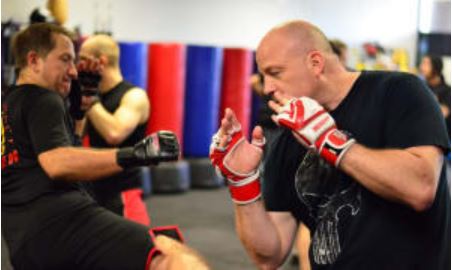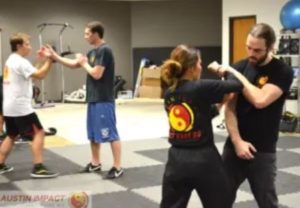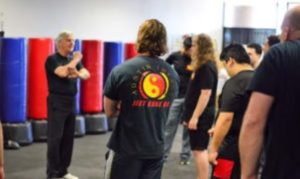Shortly before his death, Bruce Lee penned what he called “The 5 Ways of Attack”.
All attacks can be broken down into at least 1 of these 5 methods. Every martial art uses at least 1 or 2 of them.
In Jeet Kune Do it is the goal to develop all 5 of them.
A Quick Definition
Encyclopedia of
Sifu Kent goes on to say, “Although Single Direct Attack is technically the simplest method of attack, it is also the most difficult to execute successfully in combat because the speed and timing of the attack, as well as the penetration of the opponent’s defenses, must all be perfect.”
SDA and Shotokan Karate
Before I started training in Jeet Kune Do at the age of 13, I spent several years in Shotokan Karate.
The philosophy of Shotokan is centered
I remember many, many sparring sessions with my Sensei. He would put his hand on my face and keep it there, just to show that he could hit me at will if he chose. In my defense I was young, but I used to watch in awe as he did similar things to his adult students. It was all done in play, and he was a very humble and respectful instructor. But it goes to show that, with
The Best Defense Is A Good Offense
There’s a principle in martial arts called the “Offensive Advantage”. When it comes down to it, you can’t hit someone if you never throw a punch. That’s why in boxing (and in the Tao of Jeet Kune Do) there’s an old adage, “The best defense is a good offense.”
If you’re constantly on the attack, your opponent never has an opportunity to balance himself physically or mentally, and never has the chance to put his game plan into effect. As long as you’re on the offensive — as long as you’re the one doing the striking and the other guy is stuck trying to defend — then you will eventually land and you will eventually win the fight.
The Art Of Fencing Without A Sword
So how does one develop this ability?
Every opponent has dips and lulls in their attention and energy during a fight. You know those times when you’re reading a book and suddenly you realize your attention went somewhere else and you have to re-read a paragraph?
Fighting takes a lot of mental energy, and it’s natural for our minds to take small breaks from time to time to recharge and refocus. Bruce Lee taught that, through practice, one could learn to recognize these shifts in energy. By training yourself to capitalize on these moments when the energy of an opponent is low, you can land a quick, solid shot and then get out before they have time to counter.
As Bruce Lee said, “Regard your opponent’s concentration in terms of a graph and attack in the depressions, in his moments of irresolution.” Lee called this approach “western sword fencing — without the sword.”
How Legendary Fighter GSP Used This Principle
In his book The Way Of The Fight, UFC Champion Georges St. Pierre credits Bruce Lee and fencing for his striking style: “Look at my
“Most of my movement inside the ring is based on the fencing system. “When I cut distance, it’s the same movement as in fencing.” To understand this next part, keep in mind that GSP fought in an orthodox stance, meaning his left hand was his lead hand — “I don’t even have to take my right hand [hand that’s back] out, which is another thing Bruce Lee talked about. “If you take the right hand out too much, you’re off balance, which leaves you open to get hit.
“With the fencing approach you take fewer risks, you get hit less often, which is more important.
The “Stop-Hit”
A “Stop-Hit” is a counterattack thrown at the moment your opponent launches his own attack. In this way, one’s offense becomes their defense.
In JKD we call this “intercepting” an attack. Although Jeet Kune Do encompasses all aspects of fighting, Bruce Lee named what he was teaching “The Way Of The Intercepting Fist”.
Lee recognized that it was most important to take over the offense as quickly as possible. And he knew that the most vulnerable moment for an opponent is the moment they commit to any one attack. So he placed the emphasis of his training on intercepting his opponent’s movements and quickly changing the momentum from defense to offense mid-stroke. This is especially useful from a self-defense perspective since most assaults are carried out as a surprise attack, putting you immediately on the defensive.
It is this tactic of interception that made Anderson Silva such an amazing counter-striker in his hay day.



